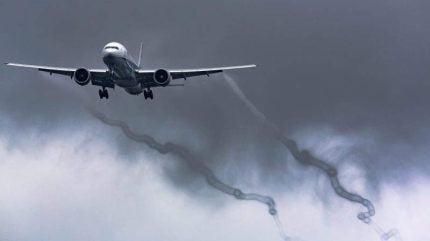
Researchers from the University of Illinois Urbana-Champaign have examined new shapes of aircraft wing and determined that non-elliptical wings could reduce the significance of the wingtip vortices produced by the wing in motion.
The paper, ‘Computational analysis of vortex wakes without near-field rollup characteristics’, was published in the Journal of Aircraft, and describes how the team compared elliptical wing shapes, which are frequently used today, with non-elliptical shapes developed by RT Jones and Ludwig Prandtl in the first half of the 20th century.

Discover B2B Marketing That Performs
Combine business intelligence and editorial excellence to reach engaged professionals across 36 leading media platforms.
“The elliptic wing configuration has been used as the gold standard of aerodynamic efficiency for the better part of a century,” said assistant professor in the university’s department of aerospace engineering Phillip Ansell. “We teach our students that it has the optimal loading characteristics and that it’s often used when looking at wing efficiency for say, minimising drag.”
“Previous academic studies have shown that, theoretically, there are other designs that actually provide lower drag of a planar wing for a fixed amount of lift generation,” he continued. “But what has been missing is an actual apples-to-apples experiment to prove it.”
Vortices are produced by wings as they move through the air, and form in their wake. They are a significant contributor to turbulence, and reducing their impact could lead to safer and more stable flights.
Ansell and his graduate student Prateek Ranjan used data from the previous studies to analyse the three wing shapes, and found that the Jones and Prandtl wings didn’t produce wing-tip vortices like the elliptical wing does. They also found that the older wings delay the formation of wake vortex structures, and increase the distance required for a wake vortex to form, by up to 12 times.

US Tariffs are shifting - will you react or anticipate?
Don’t let policy changes catch you off guard. Stay proactive with real-time data and expert analysis.
By GlobalDataThis information can be used to reassess how formation flight is understood, or to develop a new ideal configuration for the lift loading for takeoffs and landings.
The researchers stressed that their work is a basic study, and not a comprehensive set of advice for a specific company. Ansell also stated that elliptical wings can still be effective, but that ‘the right answer always depends on what your constraints are’.
If you’re building a tiny unmanned vehicle that will fly at a low speed, you’ll get a different solution for design needs than if you’re building an aircraft that will carry people at high altitudes and high speeds,” he said. “So technically, you could argue that all three wing types are the best solution.
“The question is, what are your driving constraints, such as wing span and weight, behind selecting one of them?”



